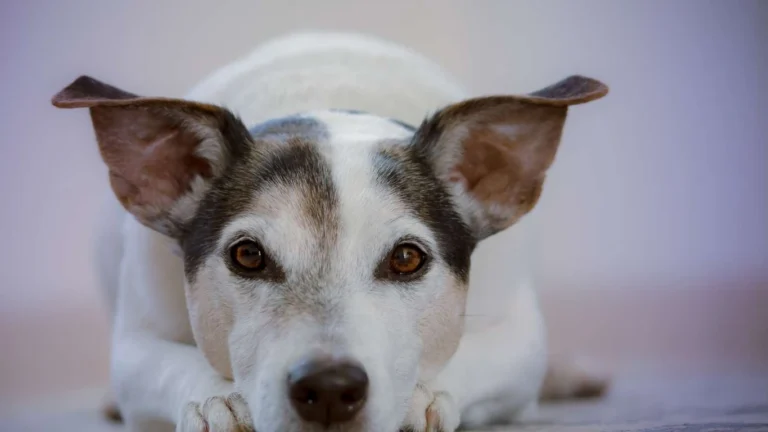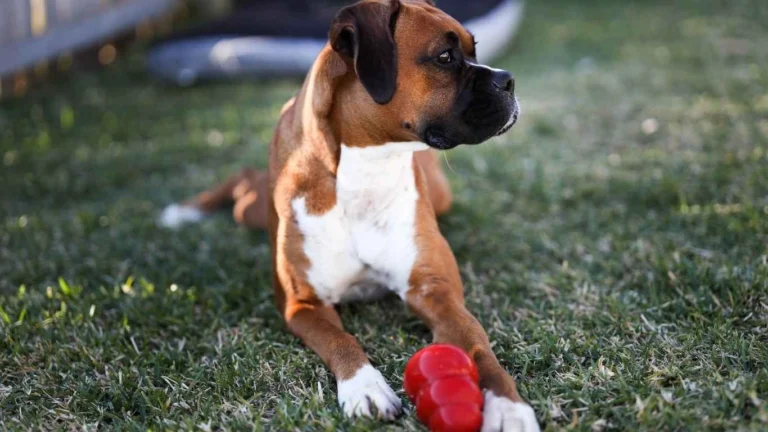Can Dogs Get Acid Reflux from Kibble? Proven Tips to Keep Them Comfortable
When it comes to feeding our furry friends, questions about their digestive health come up pretty often. One I hear a lot as a Veterinary Assistant, especially working closely with nutrition, is: can dogs get acid reflux from kibble? It’s a super common concern among pet parents who want to make sure their dogs are not just eating but feeling good after meals. Acid reflux in dogs isn’t something everyone thinks about immediately, but it can seriously affect their comfort and overall health. So, let’s unpack this together from what I’ve seen firsthand and the knowledge I’ve gained in the field.
Understanding Acid Reflux in Dogs: What’s Really Going On?

First off, acid reflux (also called gastroesophageal reflux) happens when stomach acid flows backward into the esophagus, irritating the lining and causing discomfort. In humans, it’s that classic burning sensation we call heartburn. Dogs can’t tell us they’re feeling that, but signs like excessive drooling, gagging, or even licking their lips repeatedly can be red flags.
From my experience in the vet clinic, I’ve noticed acid reflux isn’t always about what the dog eats but how their digestive system handles it. Still, diet plays a huge role. And yes, kibble can be part of the equation.
Why Kibble Might Trigger Acid Reflux in Some Dogs

One of the big reasons kibble might cause acid reflux is its composition. Many commercial dry dog foods contain ingredients that are harder to digest or may irritate a sensitive stomach, such as:
- High grain content — grains like corn or wheat can be fillers that some dogs don’t tolerate well.
- Artificial additives and preservatives — chemicals added to extend shelf life can upset digestion.
- Fat content — rich or greasy kibble may slow down stomach emptying, increasing the chance of acid reflux.
On top of that, how kibble is fed matters a lot. Dogs who gulp down their food or eat large meals infrequently tend to have more reflux issues because the stomach works harder and acid can splash back up easier.
Personal Experience: Seeing Acid Reflux in Real Life
Working as a Veterinary Assistant, I’ve cared for dogs who showed signs of discomfort linked to their diet. One case I remember vividly involved a middle-aged lab who started having that tell-tale dry cough and occasional gagging after meals. His owners switched to a lower-fat, grain-free kibble and broke his meals into smaller portions. Within weeks, he was noticeably more comfortable and playful again.
This kind of practical approach—adjusting diet and feeding habits—often makes a world of difference.
Signs to Watch For: How to Know If Your Dog Has Acid Reflux

One of the trickiest parts about acid reflux in dogs is that the symptoms can be pretty subtle and easy to mistake for something else. In my years assisting veterinarians, I’ve learned it’s crucial for dog owners to tune in closely to what their pets are showing after meals. Here are some common signs that might tip you off that acid reflux is happening:
- Frequent lip licking or excessive drooling: Dogs don’t lick their lips just because they’re thirsty. If you see this a lot after eating, it might be their way of dealing with irritation in the throat.
- Gagging or dry coughing: This can happen when acid irritates the esophagus or even reaches the throat.
- Vomiting or regurgitation: Unlike regular vomiting, regurgitation is usually effortless and may occur shortly after eating.
- Restlessness or discomfort after meals: Some dogs may pace, whine, or seem unsettled if acid reflux is causing them pain.
- Loss of appetite or picky eating: If your dog starts avoiding food or seems hesitant, acid reflux might be a culprit.
From what I’ve seen, owners sometimes overlook these signs or chalk them up to “normal dog behavior.” But if these symptoms pop up regularly, it’s worth chatting with your vet for a proper checkup.
How Vets Diagnose Acid Reflux in Dogs

Diagnosing acid reflux isn’t as straightforward as a simple blood test or x-ray. It’s a bit like detective work, combining your dog’s history, symptoms, and sometimes a few specialized tests. In the clinic, vets often start with a thorough physical exam and detailed questions about your dog’s eating habits and symptoms. Then, depending on severity, they might recommend:
- Esophageal endoscopy: A tiny camera helps the vet look inside the esophagus to check for inflammation or damage.
- Radiographs (x-rays): These can rule out other causes like hiatal hernia or other digestive blockages.
- pH monitoring: Though less common, this test measures acid levels in the esophagus over time.
It’s important to remember that acid reflux can sometimes be a symptom of another underlying condition, such as allergies or an anatomical issue. So a vet’s expertise is key to get the full picture.
Diet Tweaks to Help Manage Acid Reflux from Kibble

Since diet is such a big player in acid reflux, one of the best things you can do for your dog is to revisit their kibble and feeding habits. Here’s where my background in nutrition as a Veterinary Assistant really comes in handy—I’ve seen how simple changes can make a massive difference in a dog’s comfort and health.
Choosing the Right Kibble
Not all kibble is created equal, and if acid reflux is an issue, it pays to be picky. Here’s what to look for:
- Low fat content: Fat slows digestion, so opting for a kibble that’s moderate or low in fat can help reduce reflux.
- Limited fillers: Avoid foods with excessive grains or artificial ingredients that might irritate the stomach lining.
- Highly digestible proteins: Ingredients like chicken, turkey, or fish tend to be easier on the stomach.
- Added fiber: Some fiber can help regulate digestion, but too much might cause other issues. Balance is key.
In my experience, brands that focus on simple, quality ingredients tend to be better tolerated. Sometimes, switching to a prescription diet designed for gastrointestinal health is recommended by vets, especially if symptoms persist.
Feeding Tips to Reduce Acid Reflux
How you feed your dog is just as important as what you feed them. Here are a few tips that have worked wonders in practice:
- Smaller, more frequent meals: Feeding 2-3 smaller meals a day instead of one or two large ones can prevent the stomach from getting too full and acid from backing up.
- Elevate their food bowl: Raising the bowl slightly can help reduce acid splash-back, especially for dogs with anatomical issues.
- Slow down fast eaters: If your dog gulps down kibble, try a slow feeder bowl or spread the food on a flat surface to encourage slower eating.
- Avoid feeding right before bedtime: Give your dog a few hours after eating before they lie down to reduce reflux risk.
When I’ve shared these feeding tips with dog owners, many have seen clear improvements. It’s all about making small, manageable changes that fit your dog’s lifestyle.
Treatment Options Beyond Diet: When to Seek Veterinary Help

So, you’ve noticed signs of acid reflux in your dog and made some diet tweaks—but sometimes that’s not enough. Based on my time working alongside vets, I can tell you that acid reflux in dogs can occasionally require medical intervention to keep your pup comfortable and healthy.
When acid reflux symptoms persist despite changes in diet and feeding habits, or if your dog’s quality of life is suffering, it’s definitely time to get a thorough veterinary evaluation. Vets have several treatment options that can really help manage acid reflux effectively:
- Medications that reduce stomach acid production: Drugs like famotidine or omeprazole are commonly prescribed to lower stomach acid levels, giving the esophagus a chance to heal.
- Prokinetics: These medications help speed up stomach emptying, which can reduce acid build-up and reflux episodes.
- Protective agents: Some meds coat and protect the esophagus lining from damage caused by acid.
From what I’ve seen in clinical settings, combining medication with dietary management offers the best results. It’s always a good idea to follow your vet’s guidance closely and never give your dog human medications, as many can be toxic to pets.
When Acid Reflux Signals Something More Serious

Acid reflux can sometimes be a symptom rather than a standalone problem. During my time assisting with cases, I’ve learned that vets always check for underlying issues like:
- Gastroesophageal reflux disease (GERD): This is a chronic, more severe form of reflux that can cause ongoing discomfort and esophageal damage.
- Hiatal hernia: When part of the stomach pushes through the diaphragm into the chest cavity, it can cause reflux.
- Food allergies or intolerances: These can trigger inflammation that worsens reflux symptoms.
- Obesity: Excess weight increases abdominal pressure, making reflux more likely.
If your vet suspects any of these, they may recommend additional testing or specialized treatment. It’s a great reminder that acid reflux shouldn’t be ignored, especially if symptoms keep coming back.
Natural Remedies and Lifestyle Adjustments to Support Your Dog’s Digestive Health
Aside from medications and diet changes, I’ve seen many dog owners explore gentle, natural approaches to soothe their pups’ digestive discomfort. While these aren’t replacements for veterinary care, they can be nice complements when done carefully.
Probiotics and Digestive Enzymes
Introducing probiotics can help balance your dog’s gut flora, which plays a crucial role in digestion and immune health. In several cases I’ve encountered, adding a vet-approved probiotic supplement helped reduce episodes of reflux and improved overall digestion.
Digestive enzymes may also assist in breaking down food more efficiently, potentially easing the burden on the stomach and preventing excess acid production.
Stress Reduction
Believe it or not, stress can impact a dog’s digestive system just like in humans. Dogs that experience anxiety or changes in routine might show more digestive upset, including acid reflux symptoms. Creating a calm, predictable environment and incorporating daily walks or playtime can help your pup feel more at ease—and that can reflect in their digestion.
Weight Management
Keeping your dog at a healthy weight is one of the best things you can do to prevent acid reflux. Overweight dogs have increased abdominal pressure, which encourages acid to move upward. If your dog needs to shed some pounds, discuss a safe weight loss plan with your vet to support their digestive health.
Final Thoughts on Acid Reflux and Kibble
It’s clear from my experience that acid reflux from kibble is something that many dogs can face, but with the right combination of diet, feeding habits, and veterinary care, it’s manageable. Always keep an eye on your dog’s behavior after meals, and don’t hesitate to reach out to your vet if you suspect reflux. Every dog is unique, so working closely with a professional ensures your furry friend gets the personalized care they deserve.
References
Disclaimer
This article is intended for informational purposes only and does not replace professional veterinary advice. If you suspect your dog has acid reflux or any other health issues, please consult your veterinarian promptly for diagnosis and treatment tailored to your pet’s specific needs.






